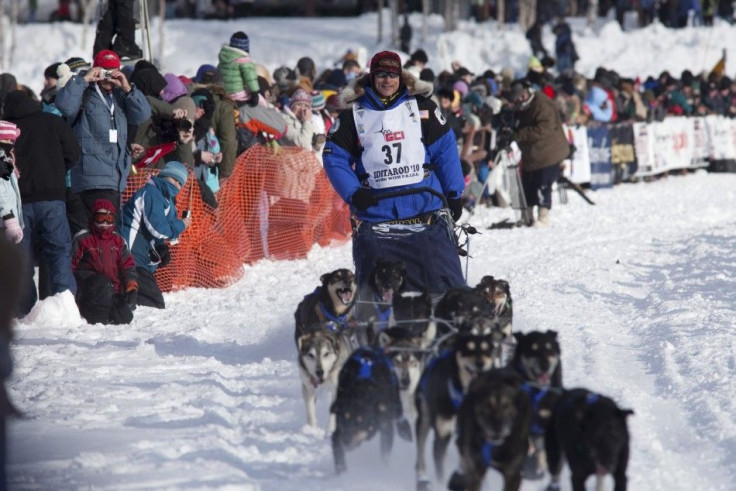Iditarod 2012: 5 Things to Know About ‘The Last Great Race on Earth’

Saturday, March 4 marks the start of the Iditarod 2012 when mushers from around the world will embark on a 1,150-mile trail of some of the roughest, most beautiful terrain Mother Nature has to offer. The Iditarod dog sled race will follow the Northern Route (map) this year, starting in Anchorage, Alaska and ending in Nome.
With this year marking the 40th running of race, former Iditarod winners and fellow competitors have returned once again to see if they can claim victory in the race that has been known to take up to 32 days to complete.
Since 1973, 1,902 teams of dogs and mushers have crossed the finish line at the Iditarod. Past participants traveled from countries like Argentina, Austria, Australia, Belgium, Canada, Czechoslovakia, and Denmark among others to compete in what is widely known as The Last Great Race on Earth.
Here are five things to know about this year's event:
1. This year's race slogan is 40th Race on 100 Year Old Trail. The 2012 Iditarod marks the 40th running of the dogsled race on the century old gold trail between Seward and Nome, now known as the Iditarod. The race, which was won in 2011 by veteran musher John Baker, utilizes both sections of the Iditarod Trail - The Northern Route in even years and the Southern Route in odd years. This year's route, the Northern Route, will run from Ophir through Cripple, Ruby, Galena, and Nulato before meeting up with the Southern Route trail in Kaltag.
2. There are 66 teams participating in the Iditarod dog sled race. This means that with an average of 15 dogs on each team, over 1,000 dogs will leave the starting line on March 4th. While the maximum number of dogs allowed on a team is 16 and the minimum is 12, all of the animals are subject to drug testing at any point from the pre-race examination until six hours after the team's finish. If blood or urine testing of a dog reveals any of the prohibitive drugs, the team is then in violation of the rules and disqualified from the race.
3. While this year's race includes six former Iditarod champions, many past champions from other long distance races, such as Yukon Quest, Kusko 300 and Beargrease, are also participating. With every sport having one dominant figure, dog sled racing is no exception. Rick Swenson is the only five-time winner of the Iditarod, having won in 1977, 1979, 1981, 1982 and 1991. He is the only person to win The Last Great Race on Earth, in three different decades.
4. As of February 16th, 52 veterans, 14 rookies and 16 women are scheduled to race in the Iditarod 2012. This year's entrants hail from five states - Colorado, Illinois, Idaho, Washington and Alaska - and from four countries - United States, Canada, Norway and New Zealand. The Record number of mushers starting the race is 96 in 2008 while the largest number of mushers to finish a single race is 77 in 2004.
5. While a purse of $550,000 is split up among the first 30 finishers, a red lantern is awarded to the last musher to finish the Iditarod. The longest time for a Red Lantern was 32 days, 15 hours, nine minutes and one second by John Schultz in 1973. On the other hand, the closest first place finish was in 1978 when Dick Mackey finished one second ahead of Rick Swenson. Mackey's time was 14 days, 18 hours, 52 minutes and 24 seconds. The winner was decided by the nose of the lead dog across the finish line.
© Copyright IBTimes 2024. All rights reserved.












